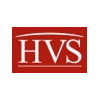Celebrating its 30th anniversary, the Asian American Hotel Owners Association (AAHOA) convention welcomed nearly 9,000 attendees in its most widely attended event in history. Reportedly, one out of every two hotels in the United States is owned by members of this important association.

Celebrating its 30th anniversary, the Asian American Hotel Owners Association (AAHOA) convention welcomed nearly 9,000 attendees in what was deemed its most widely attended event in history. The convention was filled with notable keynote speakers, valuable discussion panels, networking opportunities, a robust trade show, honoree recognitions, and fun-filled entertainment. AAHOA’s membership includes 18,500 hoteliers; reportedly, one out of every two hotels in the United States is owned by members of this important association. The following article summarizes the highlights of the three-day event held last week in San Diego, California.
Nearing a record ten-year economic recovery, it is undeniable that market expansion fatigue has set in and owners have become increasingly weary of an impending recession. Nonetheless, forecasts presented during the conference suggest, as we’ve been hearing for 18 months, that slow and steady growth will prevail through much of 2019/20. It was further suggested that now is the time to start putting money back into the hotel and undergo renovations or conversions to leverage better market positioning.
New supply will likely peak in 2019/20; however, growth in new hotel product is expected to continue through 2022, although at a much slower pace. Upscale and upper-midscale chains represent roughly 70% of the 687,000 new rooms coming online across the country, many in urban centers in 2019. Boutique-style properties and collection brands continue to gain momentum, and we will see more of these opening by 2020. Markets including Los Angeles, Las Vegas, Dallas, Houston, Nashville, Seattle, and Orlando are leading the way in new supply growth. It was reported that 86 new brands have premiered in the United States since 2015. This goes to show that the diversification of hotel brands continues to be one of the factors fueling new supply growth.
Where other chain scales are experiencing growth, the economy sector has slowed down. Although economy hotels have been performing relatively well overall, new supply for this sector has slowed. It was noted that this trend will likely continue over the next few years as higher-rated supply enters major markets.
Financing continues to be readily available for projects/assets with strong branding and good locations. Buyers have a strong appetite for acquisitions; however, the bid vs. ask gap, although narrowing, is still preventing transaction activity from accelerating. Sellers have worked diligently to grow cash flows over the course of the ongoing industry recovery for which they expect to be rewarded, while buyers are anticipating risks associated with new supply and high labor costs.
The extended-stay marketplace continues to be profitable segment for the industry, as more than a quarter of hotels in the construction pipeline are extended-stay projects. Developers and brand representatives sat on a panel discussing the benefits and sustainability of including an extended-stay product in a portfolio. A major benefit is the lower costs in labor, allowing for higher profit margins. Ron Burgett, Vice President of Extended Stay Development at Choice Hotels International, mentioned that although extended-stay properties are not recession-proof, these types of assets tend to fare better than other segments during periods of economic downturn. The extended-stay segment was created for travelers who need long-term lodging accommodations, with the product emulated the feeling of being in one’s home. Although the marketplace landscape has not changed much, home-sharing platforms have affected the segment, presenting a competitive product for the modern traveler who prefers to stay in a unique, home-like environ. Kary Lalani of Lalani Lodging gave one piece of sound advice, “Home-sharing platforms are no longer innovative, but I just want to remind everyone that at the end of the day, you must engage your sales team to get those heads in beds because that is truly what will drive your margins.”
Occupancy and average rate (ADR) metrics so far in 2019 continue to translate into positive RevPAR figures nationally, driven almost entirely by ADR. Supply growth will likely remain on par with demand growth, resulting in flat occupancy. Extraordinary growth in San Francisco after the reopening of the expanded Moscone Center has inflated national figures, contributing a quarter of the country’s RevPAR growth. Nonetheless, when isolated, RevPAR is still registering growth and expected to continue to do so at a muted pace in 2019 and 2020.
Looking ahead, the main concerns expressed by owners involved labor costs, from staffing and operating hotels to building them. Record-low unemployment rates, a competitive wage landscape, and increasing inflation are making it difficult to absorb these rising costs, and in turn, challenging year-over-year profit increases. The ever-increasing reach and influence of OTAs and their impact on net room revenues was also discussed as a potential threat. Technology advancements in the shared economy space continues to place pressure on brands to reinvent and optimize the traditional hospitality experience.
This year hit many milestones for this association. Nishant “Neal” Patel became secretary, the youngest person to ever hold this position, which will eventually lead to chairmanship in three years. On the final night of the convention, AAHOA welcomed its first chairwoman in its entire 30-year history; Jagruti Panwala took reigns of the association and pledged to work tirelessly for the membership and the industry for the next year. This year’s anniversary celebration recognized the many valiant efforts made thus far and provided a bright outlook for the next 30 years.
HVS works with AAHOA and its members to provide unrivaled hospitality expertise across the United States. Kasia M. Russell, MAI, leads our teams in the West Coast cities of Portland and Seattle and is ready to assist you on any consulting need you may have. Drew Noecker with HVS Brokerage can also discuss any asset you may be considering selling in 2019.